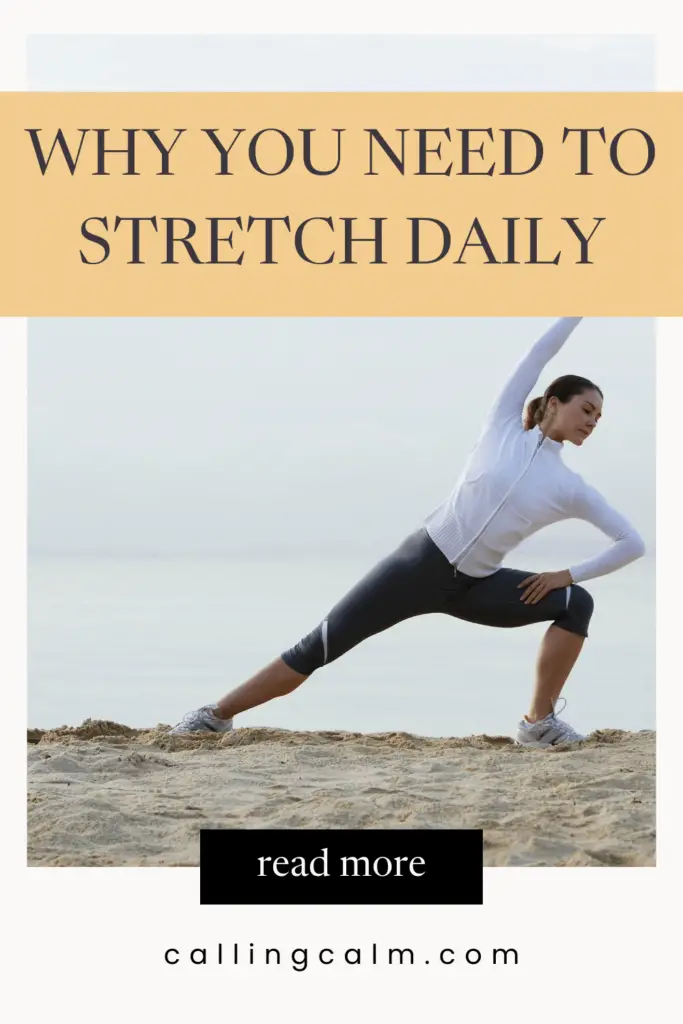
You’ve probably heard that you should stretch before and after a workout. But what are the benefits of stretching, and why is it so often overlooked?
As it turns out, stretching has a lot of benefits that many people don’t realize. For one thing, stretching feels good. It can help improve your range of motion, maintain your flexibility, and protect you from injuries. When you stretch, you’re basically giving your body a mini-massage, which can help improve blood circulation and reduce stress levels.
Most people know that stretching is important but often don’t make time for it in their busy schedules.
The Benefits of Stretching
Stretching has a host of benefits that can be achieved by people of all ages, genders, and levels of athleticism. From increasing range of motion to improving Circulation, stretching helps maintain good physical health in a variety of ways. One of the most important benefits of stretching is that it helps prevent injuries. When muscles are loose and flexible, they are less likely to be strained or pulled. In addition, stretching can help relieve pain from existing injuries by restoring range of motion and decreasing inflammation.
Stretching also helps improve circulation by delivering fresh oxygenated blood to the muscles. This can help reduce fatigue and speed up the healing process following an injury. For all these reasons, stretching should be an integral part of any fitness routine.
The Best Time To Stretch
Many people think you only need to stretch before or after exercise. However, the truth is that stretching is an integral part of any workout routine. Not only does it improve flexibility and range of motion, but it also helps to prevent injuries. So when is the best time to stretch? The answer may surprise you.
Research has shown that stretching is most effective when it is done as part of a warm-up routine. That means taking some time to stretch before you start your workout.
Not only will this help you avoid injury, but it will also improve your performance. So next time you hit the gym, be sure to take some time to warm up and stretch your muscles first. Your body will thank you for it.
How To Stretch Properly
Stretching is often overlooked as an important part of a fitness routine. However, stretching before and after exercise can help avoid injury and maximize results. There are four main types of stretching: ballistic, dynamic, static, and passive.
Ballistic stretching involves bouncing or jerking motions and should be avoided, as it can lead to muscle strain.
Dynamic stretching involves active movements that take the muscles through a full range of motion. This type of stretching is ideal for warming up before exercise.
Static stretching involves holding a position for an extended period of time and is best used after exercise to cool down the muscles.
Passive stretching involves using an external force to stretch the muscles, such as holding a stretch with your hands or using a strap or towel. When stretching, be sure to breathe deeply and slowly. Never hold your breath while stretching, as this can lead to lightheadedness. Hold each stretch for at least 30 seconds and repeat 2-3 times.
The Types of Stretches You Should Do
Ballistic stretching is a type of stretching that uses momentum to force the body into a stretched position. Athletes commonly use it as a way to improve their range of motion and flexibility. However, ballistic stretching can also be dangerous, as it can place undue stress on muscles and joints. Ballistic stretching can lead to muscle strain, joint pain, and even injuries when performed incorrectly. For these reasons, it is important to avoid ballistic stretching unless you are under the supervision of a qualified coach or instructor. If you do choose to ballistic stretch, be sure to warm up properly and stop if you feel any pain or discomfort. Remember, safety always comes first!
Dynamic stretching is a type of stretching that uses active movements to take the muscles through a full range of motion. This type of stretching is ideal for warming up before exercise because it helps increase blood flow and body temperature, improving performance and reducing the risk of injury. Dynamic stretches can also be used as part of a cool-down after exercise, as they can help to reduce muscle soreness and improve flexibility. It is essential to perform the movements slowly and with control to get the most benefit from dynamic stretching. The stretch should also be held for at least 10 seconds before returning to the starting position. When done correctly, dynamic stretching can be an effective way to improve range of motion and flexibility.
If you’re looking to improve your flexibility, static stretching is an excellent way to go. Static stretching involves holding a position for an extended period of time, and it’s often used as a cool-down after exercise. This type of stretching can be particularly effective in lengthening the muscles and improving range of motion. It’s also generally safe and easy to do. You can static stretch anywhere, at any time. And there’s no need for any equipment – all you need is your body and a little bit of space. So if you’re ready to improve your flexibility, give static stretching a try. You’ll be amazed at the results.
Stretching Tips for Beginners
There are a few things to keep in mind when you’re just starting to stretch. First, be sure to warm up before you start stretching. A light jog or jump rope is a great way to get your heart rate up and blood flowing to your muscles. Second, don’t push yourself too hard. It’s important to listen to your body and only stretch to the point of gentle resistance. Third, be sure to breathe deeply as you hold each stretch. This will help you relax into the stretch and increase its effectiveness. Finally, don’t forget to cool down after your stretching session.
A few gentle stretches will help your muscles recover from your workout and prevent stiffness. By following these simple tips, you’ll be well on your way to enjoying the benefits of stretching!
Stretching is a great way to improve your range of motion, maintain your flexibility, and protect yourself from injuries. It’s also a good way to reduce stress levels and improve blood circulation. Most people know that stretching is important but often don’t make time for it in their busy schedules. If you can find the time to stretch regularly, you’ll be able to enjoy the many benefits it has to offer.


